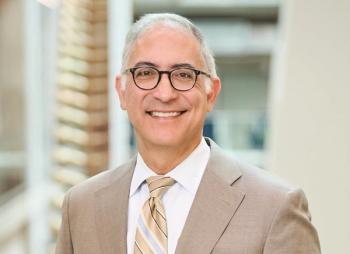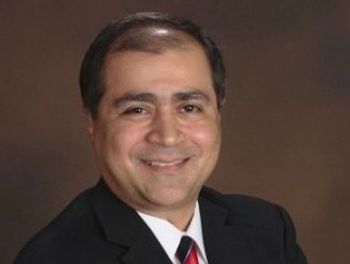
Medical school applications hit record high
The number of applicants rose 18% over the past year, the AAMC said. Women and members of most minority groups made gains.
Applications to medical schools surged to a record high in 2021, and women and minority members are making gains, according to new data released by the Association of American Medical Colleges.
Nationwide, 62,443 people applied to medical schools in the 2021-22 year, an 18% increase from the previous year, the AAMC said Wednesday.
It's far and away the largest one-year increase, in terms of percentage, in two decades. The second biggest one-year rise came in 2007, when there was an 8% uptick in applications.
Norma Poll-Hunter, the AAMC’s senior director of workforce diversity, attributed the surprising spike to several factors. The COVID-19 pandemic may have spurred people to pursue careers as physicians, she said.
"There was more of a call to action with public health being in the news every day," Poll-Hunter said in a phone interview.
The pandemic may have given some "a nudge to kind of move forward and apply to medical school," she said.
Some practical reasons clearly have played a role, Poll-Hunter said.
With the pandemic, medical schools relaxed application deadlines and allowed prospective medical students to do video interviews, increasing accessibility. Some schools made the Medical College Admissions Test (MCAT) optional.
"Because of the pandemic, schools were more flexible with their application processes," Poll-Hunter said.
David J. Skorton, AAMC’s president and CEO, said the uptick in applications is welcome amidst projections of a
“It is gratifying to see this growth in the diversity and number of students interested in a career in medicine, particularly during such a unique time in history as a result of the global pandemic and the growing recognition of the effects of health disparities in our country,” Skorton said in a statement.
Overall, medical school enrollment rose to 95,475, a 1.5% increase, the AAMC reported.
Women accounted for 56.8% of applicants and 52.7% of medical school enrollment. AAMC leaders have said recruiting more women is a key step to addressing the shortage of doctors.
Healthcare leaders have also said women need more support as they begin their medical careers. Specifically, experts say the pay gap for women physicians must be addressed, and healthcare systems should be offering better family leave policies.
Female physicians earn $2M less in their careers COVID-19 pandemic is having a disproportionate impact on careers of women doctors
Medical schools are gaining in diversity. The number of Black first-year students rose to 2,562, a 21% increase. And the number of first-year students who are Hispanic or Latino rose to 2,869, a 7.1% increase. There were 6,004 Asian first-year students, an 8% increase.
But in one setback, the number of first-year American Indian or Alaska Native students dropped by 8.5%, to 227. That's a source of concern, Poll-Hunter said.
While more people from underrepresented groups are applying to medical school, Poll-Hunter indicated it's hardly time to declare mission accomplished when it comes to diversity.
"We are making some gains. We have a long way to go," Poll-Hunter said.
Medical schools need to be inclusive for all students, including those from minority groups and those with disabilities.
In 2021, about 8% of medical school graduates identified as having a disability. But less than half of those students with disabilities said their medical schools gave them accommodations to assist them, students said in an AAMC survey.
More programs should be launched to introduce medicine and science to children of minority groups early in their school careers, even in kindergarten, Poll-Hunter said.
“We have to consider innovative ways to attract individuals from diverse communities," she added.
Medical schools also need to consider more "holistic" admissions policies, Poll-Hunter said. Medical colleges need to consider more than GPAs and MCATs and weigh the whole set of skills and potential of students. Admissions offices also should undergo unconscious bias training, she said.
It's also important to pay attention to socio-economic diversity in medical school applicants, Poll-Hunter said. She noted 80% of medical students come from families in the top-fifth of incomes.
At the federal level, lawmakers can expand and diversify the pool of applicants by approving more Medicare-funded slots for graduate medical education. Lawmakers have proposed more aid for medical education in 2022 budget proposals, and healthcare advocates hope those plans come to fruition.
This year’s crop of new medical school students ranged in age from 16 to 55, a wider range than last year, the AAMC reported. The average student performed 650 hours of community service.








































